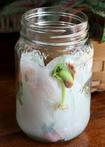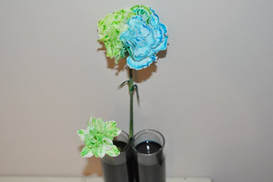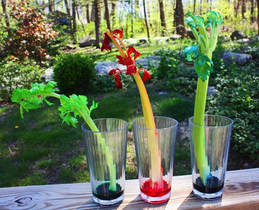 I’m always soliciting topics for this Family Blog. This week, I was asked to write about things to do when your kids are home all summer. This may be the easiest one I’ve ever written. It will definitely have to be another series because there are so many options. Someone asked me once, not in a very friendly way, why I always turned everything into a teaching moment. My answer was, “Because I’m a teacher.” As parents, we should be teaching our children as much as we can. I did very poorly in school but excelled in tests and written assignments because my parents were constantly teaching me at home. I learned reading, writing, science, social studies and more. The only thing lacking in my home education was math. Because I worked as a teacher during the school year, I had summers off with my kids. I often took in other kids during summers as well. I even ran an informal summer camp at my home for a while. I realized quickly that I needed to keep all these kids engaged or they would resort to bickering or finding their own entertainment, a scary prospect. I had themes throughout the summer and took them on field trips based on those themes. We also went swimming every day, sometimes at pools, sometimes at a beach. Usually, the first theme of the summer was plants and gardening. Plants are fascinating. You can learn about their root systems by lining a clear jar with paper towel, packing some more paper towel, or anything that will hold the flat layer in place against the glass, and placing beans between the glass and the paper towel. Then fill the jar with water and wait for the beans to sprout. After studying the roots and the sprout itself, you can carefully plant it in dirt, either in a pot or directly in the ground. This can also be done inside a plastic sandwich bag. You can learn about how the plants take the water from the ground all the way up into their leaves by placing a stalk of celery in a glass of colored water. This works with carnations too, but with the celery, you can often see the colored water in the veins of the stalk as it works its way up to the leaves. A dark colored water works best. After a while, the leaves (or petals, if you use carnations) have changed color. If using a carnation, try splitting the stem and put each half in a glass with different colors. Some other fun experiments are:
* Plant a seed in a cup or a flower pot and lay it on its side. The plant will always bend its stem to grow vertically, reaching for the sun. * Plant seeds in many different pots. Put one in a sunny window, one on a shelf with indirect light and one in a cabinet or closet with little or no light. Water one moderately, overwater another and give the last one no water. Let your kids figure out what a plant needs to grow. Encourage them to be creative and come up with other ideas (water them with orange juice or milk, put one in a sealed container with no air flow, etc.) * Terrariums are fun and easy to make. This can lead to a lesson in evaporation and rainfall. In addition to science experiments, you can always go to a formal or botanical garden or an arboretum. Here are a few that are nearby: https://www.union.edu/news/stories/2015/05/jacksons-garden-a-peaceful-retreat-at-union-college.php https://www.pinehollowarboretum.org/ or if you don’t mind taking a little longer ride, https://www.berkshirebotanical.org/ The Schenectady Rose Garden in Central Park is beautiful, and you can stop off at the playground while you’re there. Collins Park is not far away, if you want to swim in the lake, and there is a playground there, too. https://schenectadyrose.org/ and https://www.iloveny.com/listing/collins-park/1713/ Other fun things include pressing flowers to turn into art projects later by gently laying them between paper towels inside a large book. Certain flowers will work better than others, so you’ll have to experiment with many varieties. The flat blossoms are good to start with. I’ve also always enjoyed going on a hike to look for edible plants. If you do this, be sure your children understand that they need to check with you before eating wild plants. Start with plants that are easily recognized. Dandelions and violets are good first choices. And, have you ever had pine needle tea or sumac lemonade? Yum! To make sumac lemonade, pick about a dozen red clusters. Then rub, crunch, and squeeze them in about a gallon of cold water for five to 10 minutes to release the flavor. Next, drape a piece of cheesecloth over a bowl, and strain the liquid. Don't be confused and use poison sumac. Use the red berry clusters from the sumac tree. There are lots of other fun ideas for projects to do with or about plants. I could spend a whole summer just on this one topic, but there are other equally fun things around that I will get to each week. Leave a comment letting me know what you tried and how it went, or other ideas you may have that you can share here.
0 Comments
Your comment will be posted after it is approved.
Leave a Reply. |
Archives
April 2019
Categories |



 RSS Feed
RSS Feed